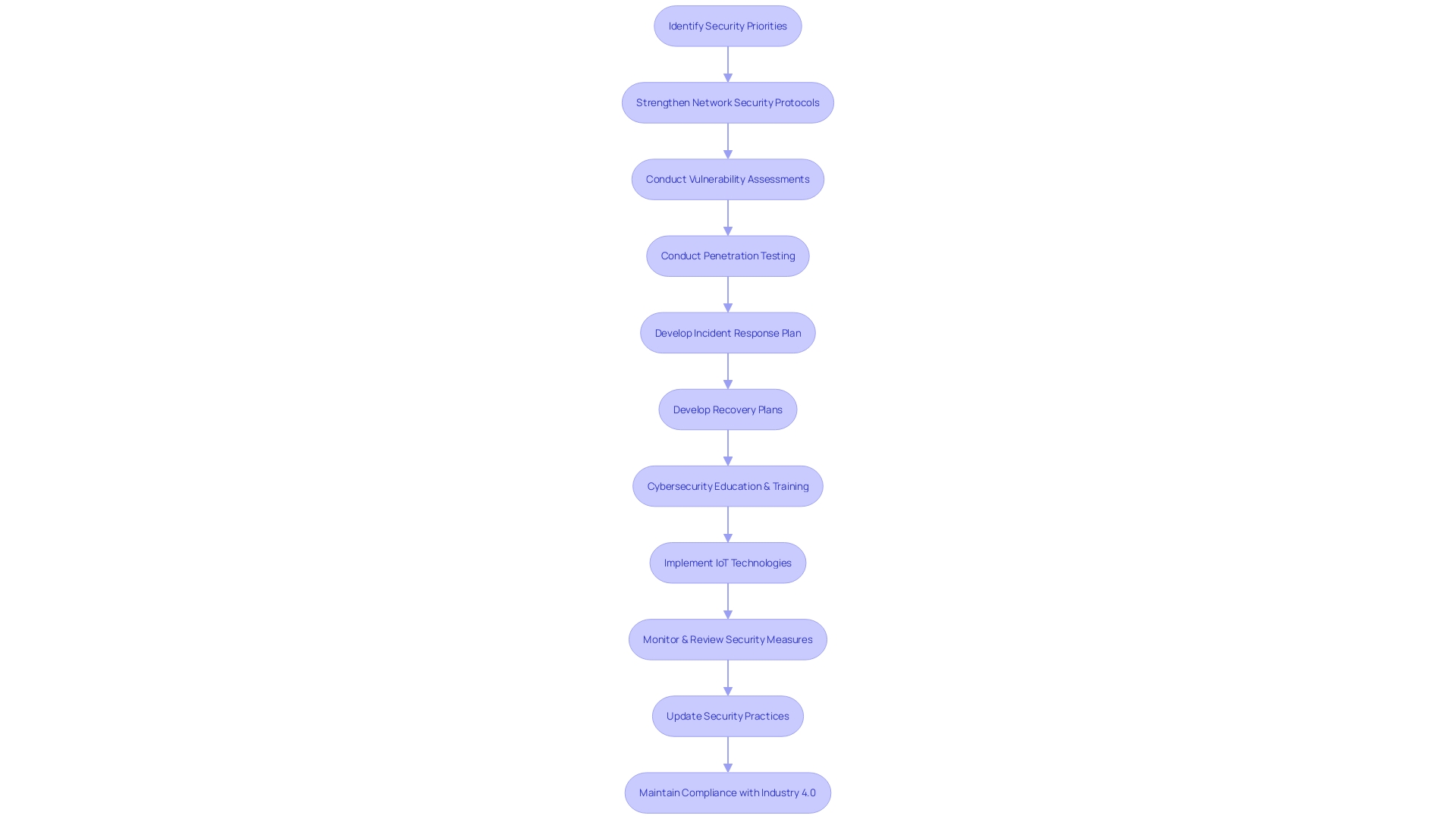Introduction
Leveraging the power of the Industrial Internet of Things (IIoT) in e-commerce operations goes beyond just understanding interconnected devices. It involves aligning these technological advancements with strategic business goals. IIoT encompasses a network of smart devices and systems that exchange data to optimize industrial processes.
For e-commerce, this can revolutionize supply chain management, inventory tracking, and customer experiences by harnessing real-time data for actionable insights. To effectively utilize IIoT in e-commerce, it is crucial to assess current systems, challenge assumptions, and learn from successful case studies. The future of e-commerce relies on the integration of smart technologies like IIoT, as demonstrated by the growing impact of IoT technologies across various sectors.
By delving into strategic implementation guided by business goals, e-commerce operations can unlock the full potential of IIoT for smarter, more efficient, and profitable operations.
Understanding IIoT and E-commerce Operations
Leveraging IIoT in e-commerce operations transcends a mere understanding of interconnected devices; it's about aligning these technological advancements with the strategic goals of your business. IIoT, which stands for Industrial Internet of Things, encompasses a network of smart devices and systems exchanging data to optimize industrial processes. For e-commerce, this can revolutionize supply chain management, inventory tracking, and customer experiences by harnessing real-time data for actionable insights.
In an e-commerce context, it's critical to start with a clear definition of business objectives. By assessing current systems and processes, from IT to operational technology and process engineering, e-commerce directors can pinpoint where IIoT can deliver the most value. This might involve comparing the costs and benefits of different IIoT approaches or challenging assumptions about current processes and their interactions with suppliers and customers.
Real-world case studies demonstrate the power of IIoT in action. For instance, an upgraded ERP system often marks the beginning of a successful digital transformation, showcasing tangible improvements in operational efficiency and cost savings. These improvements are not just theoretical; they are backed by data showing that modern Industry 4.0 technologies have enabled manufacturers to achieve higher Overall Equipment Effectiveness (OEE) and meet various production KPIs.
IIoT's potential is further highlighted by its role in creating smarter, more efficient, and profitable operations, particularly in industries such as manufacturing, energy, and transportation. These systems involve intricate technology stacks and place a premium on security and operational control.
The future of e-commerce hinges on the integration of such smart technologies. As demonstrated by the opening of a checkout-free store in Dublin Airport, employing IoT to enhance the shopping experience, the relevance of IoT in our daily lives is evident. It is estimated that the global market for smart home automation, a close relative of IIoT, could reach $40 billion, emphasizing the growing impact of IoT technologies across various sectors.
In conclusion, to effectively utilize IIoT in e-commerce, one must go beyond grasping the basics and delve into strategic implementation, guided by business goals and boosted by insights from successful case studies and industry trends.
Identifying Key Cybersecurity Risks in IIoT
As the Internet of Things (IoT) weaves itself into the fabric of e-commerce operations, its potential to revolutionize business is matched by the scale of cybersecurity risks it introduces. With an estimated 16 billion devices connected to the IoT as of 2023, the expanded attack surface for cyber threats is formidable. Key challenges include unauthorized access, data breaches, device tampering, and malware attacks.
To mitigate these risks, a robust risk assessment is crucial, identifying vulnerabilities and developing strategies for defense. Proactively assessing risks, particularly in the software supply chain, is essential. A Software Bill of Materials (SBOM) provides a detailed inventory of software components, crucial for understanding and preventing potential breaches.
Collaborative efforts and adherence to robust security frameworks help ensure the secure lifecycle of industrial equipment. As the number of IoT-connected devices continues to surge, establishing digital trust becomes paramount. This trust forms the backbone of a secure IoT ecosystem, necessary for the safe operation of everything from smart appliances to industrial control systems.
The security of each device is critical, as it serves as the foundation for the reliability of the data they provide, which in turn underpins the entire e-commerce operation. Consequently, a measured, phased approach to security, tailored to the specific needs of each project, is recommended to navigate the complexities of IoT security effectively.

Best Practices for Ensuring Cybersecurity in IIoT
To fortify the cybersecurity of e-commerce operations that leverage IoT technologies, it's imperative to adopt a strategic approach. Consider these advanced practices:
-
Strengthen Network Security Protocols: Implementing state-of-the-art encryption, multifactor authentication, and secure communication protocols is critical for safeguarding data exchanges between devices and systems.
-
Proactive Vulnerability Assessments and Penetration Testing: It's crucial to consistently evaluate the security posture of your IoT infrastructure, pinpoint vulnerabilities, and conduct penetration testing to assess your system's defense against cyber threats. Research shows that the manufacturing sector is particularly susceptible to cyberattacks, highlighting the importance of rigorous security measures.
-
Comprehensive Incident Response and Recovery Plans: Developing detailed incident response strategies is essential for effective cybersecurity management. Plans should clearly define responsibilities, establish communication protocols, and outline procedures to mitigate the impact of security incidents.
-
Cybersecurity Education and Training for Personnel: Employee awareness and training on cybersecurity best practices are fundamental in recognizing and preventing potential risks to e-commerce operations.
Implementing these best practices, supported by insights from Industry 4.0 and IIoT perspectives, can significantly enhance the cybersecurity of your e-commerce operations. For instance, Industry 4.0 emphasizes the integration of data sources and the adoption of supporting technologies to improve operational efficiency, which aligns with securing IoT networks. Furthermore, with the steep financial consequences of cyberattacks in the retail industry, averaging $5.66 million per data breach, the emphasis on robust cybersecurity measures becomes even more pronounced.
By incorporating these advanced practices into your cybersecurity strategy, you can secure your business against the increasing threat of cyberattacks and ensure the continuity and success of your e-commerce activities.

Optimize Content for SEO and Audience Engagement
To stand out in the bustling e-commerce marketplace, you must fine-tune both your search engine optimization (SEO) and your content to resonate with your audience. A robust SEO strategy enhances your website's visibility, fostering organic traffic and elevating conversion rates. Here are pivotal tactics for honing your content for SEO and audience engagement:
-
Embark on a thorough keyword research expedition to uncover pertinent keywords that are frequently sought after. Tools like Ahrefs and SEMrush offer a treasure trove of data to ascertain what your audience is inquiring about and the content they desire. This step is paramount—without it, your other efforts could be misguided.
-
Forge content that is both high-caliber and arresting, tailored to your audience's interests and needs. Reflect on the approach taken by an American solar equipment editor, who invests ample time in crafting articles that are both instructive and captivating, ensuring they resonate with readers.
-
Sharpen your on-page SEO elements—meta tags, headings, and URLs—by incorporating these carefully selected keywords, enhancing your content's relevance and discoverability.
-
Implement a savvy linking strategy that employs both internal and external links, bolstering your site's navigability and standing.
-
Enrich your content with multimedia—images, videos, and infographics—to not only attract but also retain user engagement. As noted by content experts, the caliber of your content reigns supreme. Aim to provide unparalleled clarity and insight, setting your content apart.
By diligently applying these methods, you can significantly boost your website's prominence, draw a larger organic audience, and captivate your target market more effectively.
Conclusion
To effectively leverage the power of the Industrial Internet of Things (IIoT) in e-commerce operations, it is crucial to align these technological advancements with strategic business goals. IIoT encompasses a network of smart devices and systems that exchange data to optimize industrial processes, revolutionizing supply chain management, inventory tracking, and customer experiences through real-time data for actionable insights.
To fully utilize IIoT in e-commerce, it is essential to assess current systems and challenge assumptions. By learning from successful case studies and industry trends, e-commerce directors can pinpoint where IIoT can deliver the most value. Real-world examples demonstrate the tangible improvements in operational efficiency and cost savings that come with implementing IIoT technologies, such as upgraded ERP systems.
The future of e-commerce relies on the integration of smart technologies like IIoT. The growing impact of IoT technologies across various sectors, as seen in the opening of a checkout-free store in Dublin Airport, highlights the relevance of IoT in our daily lives. The potential of IIoT is further emphasized in industries like manufacturing, energy, and transportation, where smarter, more efficient, and profitable operations are possible.
In conclusion, to effectively utilize IIoT in e-commerce, strategic implementation guided by business goals is crucial. By delving into insights from successful case studies and industry trends, e-commerce operations can unlock the full potential of IIoT for smarter, more efficient, and profitable operations.





